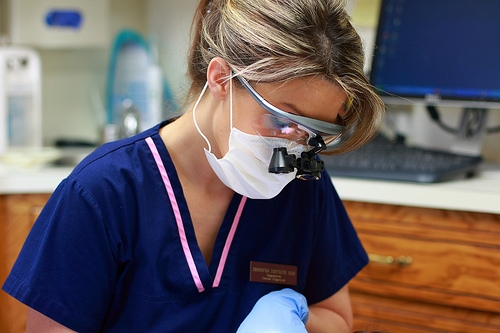Improve your oral health with xylitol!
March 1st, 2019

Xylitol tastes sweet, but unlike sugar, it is not converted to acid that can cause your teeth to decay. It’s a naturally occurring sweetener found in plants, fruits, and vegetables; even the human body produces it in small amounts. Xylitol is widely used in sugar-free chewing gum, mints, candies, and even certain forms of medicine.
The World Health Organization has approved xylitol because only a small amount is needed for its health benefits. It’s even safe for diabetics, with a glycemic index of only seven. Xylitol has 40% fewer calories than other types of carbs: less than three calories per gram.
So how can this natural sweetener benefit your oral health? Take a look at the facts. Tooth decay starts when bacteria consumes the sugars left in your mouth. When you eat sugary foods, the bacteria on your teeth will multiply and make acid that can destroy your enamel.
Xylitol is derived from fibrous parts of plants, so it does not break down like a regular sugar. It actually helps maintain a neutral pH level in the mouth, which in turn prevents bacteria from sticking to the teeth. The bacteria are then unable to digest xylitol, which means your teeth won’t develop enamel damage and cavities.
Studies have shown the consumption of xylitol as a sugar substitute or a dietary addition had a dramatic reduction in new cavities and even reversed existing cavities. These effects are long lasting: low cavity rates remained years after the trials were done.
When there’s less bacteria and acid in your mouth due to xylitol, your teeth stay healthier. The more frequently it’s ingested, the more you will prevent enamel damage.
Aim to consume around five grams a day, or one gram every three hours if possible. You can do this by consuming gum, tablets, candy, or mints that have xylitol as one of the first ingredients after your meals. You can find these products in health food stores and specialty grocery stores.
Since xylitol replaces sugar on a one-to-one ratio, it’s used in several common items:
- Toothpaste
- Mouth rinse
- Baby oral wipes, gel, and pacifiers
- Nasal wash
- Dry mouth spray
- Granulated forms for cooking
- Granulated packets to add to drinks
- Commercially prepared foods
Make sure to pick up items that contain xylitol the next time you’re at the store! This is an easy way to maintain great oral health. If you have specific questions about xylitol, ask Dr Karina Gregg during your next appointment at our San Marcos, CA office.






 Website Powered by Sesame 24-7™
Website Powered by Sesame 24-7™